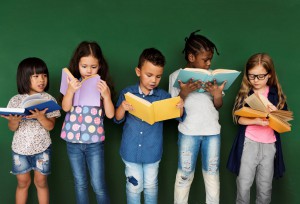
In the dynamic tapestry of today’s classrooms, students bring a myriad of experiences, learning styles, and abilities. Recognising and responding to this diversity is at the core of effective teaching. One powerful approach that educators employ to meet the needs of every learner is Differentiated Instruction.
Understanding Differentiated Instruction
Differentiated Instruction (DI) is an educational philosophy that acknowledges the unique characteristics of each student and strives to create a learning environment that caters to diverse needs. It is a proactive response to the realisation that no two learners are the same, and therefore, a one-size-fits-all approach may not unlock the full potential of every student.
Tailoring Learning to Individual Styles
One of the fundamental principles of Differentiated Instruction is the recognition of various learning styles. Students absorb information differently, be it through visual, auditory, or kinesthetic methods. DI encourages teachers to incorporate a variety of instructional strategies, ensuring that each student has the opportunity to engage with the material in a way that resonates with them.
Addressing Varied Skill Levels
In any classroom, students enter with a spectrum of skills and prior knowledge. Differentiated Instruction acknowledges these differences and allows for flexible pacing. Advanced learners can be challenged with enriched content, while students who may need additional support receive targeted interventions. This approach fosters an environment where each student can progress at their own pace, promoting a sense of achievement and self-efficacy.
Nurturing Individual Interests
An essential aspect of Differentiated Instruction is the personalisation of content to align with students’ interests. By incorporating real-world examples, diverse literature, and opportunities for student choice, educators can make the learning experience more relevant and engaging. This not only captivates students’ attention but also instils a passion for learning that extends beyond the classroom.
The Role of Inclusive Classroom Practices
Differentiated Instruction goes hand in hand with creating an inclusive classroom culture. By acknowledging and accommodating diverse learning needs, educators foster an atmosphere of acceptance and support. This, in turn, promotes positive relationships among students and cultivates a sense of belonging, contributing to a more harmonious and collaborative learning environment.
Practical Strategies for Differentiated Instruction
- Flexible Grouping: Arrange students based on their strengths and needs for specific activities.
- Varied Assessment Methods: Employ a mix of assessments, such as projects, presentations, and traditional tests, to capture diverse skills.
- Learning Stations: Create stations with different activities to cater to various learning preferences.
- Tiered Assignments: Provide assignments with different levels of complexity, allowing students to choose based on their readiness.
Embracing the Future of Education
As we navigate the ever-evolving landscape of education, Differentiated Instruction emerges as a beacon, guiding us toward a future where every learner is recognised, valued, and provided with the tools they need to succeed. In embracing the diversity within our classrooms, we not only enrich the learning experience but also empower each student to reach their full potential. Differentiated Instruction is not just an approach; it’s a commitment to creating a more equitable and inclusive educational journey for all.



